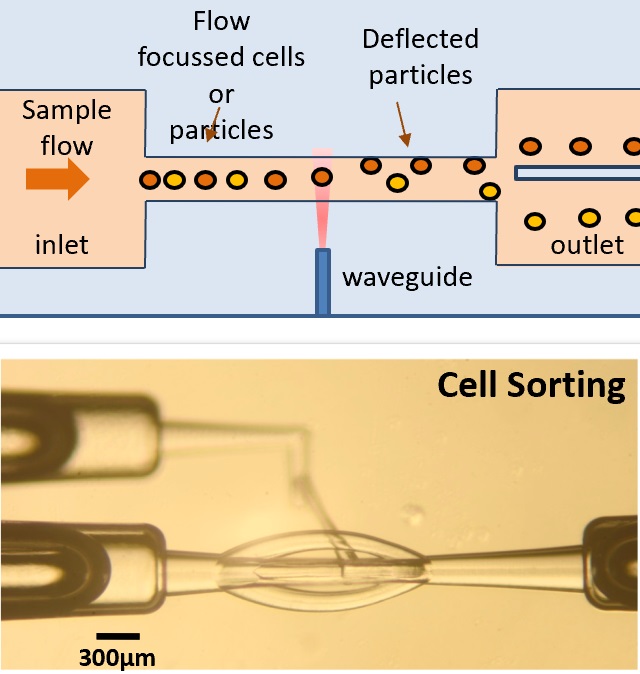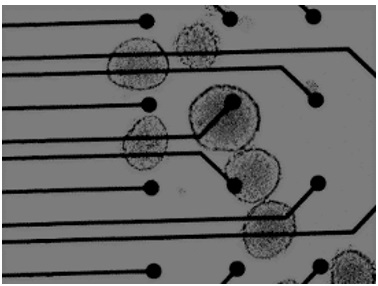Biophysics
The biophysics research within IB3 at Heriot Watt covers a wide-range of physics-based methods to study biological systems, often in collaboration with biologists and clinicians.
Key areas of research
Single Cell Manipulation: Interaction of Light with Cells

Using laser light to optically trap and manipulate individual cells is a powerful technique for isolating and studying biological systems at the single cell level. Within IB3 we develop novel methods for trapping, isolating and rotating cells without contact using laser light.
Key Contacts
Microfluidic Cell Manipulation

Microfluidics involves creating networks of fluidic channels below millimetre in scale, which can be small enough to work with individual cells. By engineering complex networks of channels it is possible to create lab-on-a-chip devices ideally suited to manipulating individual cells.
Key Contacts
Graeme Whyte and Lynn Paterson
Electrophysiology and Bioelectricity

Within IB3 we develop new tools for electrophysiology which allow deeper understanding of the electrial behaviour of cells and oganoids by integrating novel electrodes into microfluidic devices.
Key Contacts
Ultrasound and Clinical Imaging : New tools for Disease Diagnosis

IB3 are developing novel imaging clinical techniques to enable more detail and information to be measured than currently possible. These developments cover a variety of modalities, from super-resolution ultrasound imaging which is being developed using microbubbles which interact with ultrasound waves to give improved resolution, to multiplexed lung endoscopy which is using advanced optical fibres and detectors to provide advanced imaging functionality within the lung.
Key Contacts
Vassilis Sboros, Weiping Lu, Paul Dalgarno
Spectroscopy and New Imaging Modalities

Researchers within IB3 are investigating new methods of measuring the light coming from biological samples. By engineering specialised surfaces, it is possible to extract chemical "fingerprints" using Surface Enchanced Raman Spectroscopy which can be used to identify the composition of samples. Other techniques include accurately measuring the time when the light arrives which can give insight into the molecular environment within biological samples.